Why Not Visit. . . The Orkney Islands
This throwback thursday throws way way back to the Neolithic, which precedes the bronze age. Most people probably have no idea what/where the the Orkney Islands are. Well I am about to drop some knowledge. The Orkney Islands are part of Scotland. They are located about 10 miles north of Scotland, and are comprised of 70 islands. I wound up in the Orkney Islands by chance in 2012. I was on a cruise with my boyfriend and his parents when a port was cancelled due to weather. As a replacement, the ship landed at the Orkney Islands instead. The crew justified the Orkney Islands as a good replacement as it was then the most highly rated port on cruise critic. At that time I had never heard of the Orkney Islands. Well cruise critic was right, the Orkney Islands are one of the best ports I have ever visited on a cruise.
The Orkney Islands may not appeal to every traveler out there. They are cold and damp. There is not a lot of scenery or beautiful vistas. The shopping and taverns are limited. However for those who aspire to be Indiana Jones, the Orkney Islands host a treasure trove of archaeological wonders. We visited the largest of the islands, Mainland.
Skara Brae
On the west coast of Mainland is Europe's largest Neolithic ruins Skara Brae. An entire Neolithic (approx. 3180 BC-2500 BC) settlement consisting of 8 houses are exceptionally preserved as they were buried until the earlier part of the 19 th century when a storm uncovered them. You can still see fire places, shelves, and storage areas well preserved as you walk around the remains of this neolithic village. Not surprisingly, Skara Brae is on the list of UNESCO world heritage sites. The entrance to Skara Brae has a reconstructed Neolithic home that you can duck walk into (the ceilings are low) to see what the remains of the 8 homes once looked like when whole. The homes, now kissings their roofs, were covered with dome-like roofs, which were then covered with grass for insulation. The low ceilings in the entrances, which were long winding corridors kept out rain and and the cold outside air.
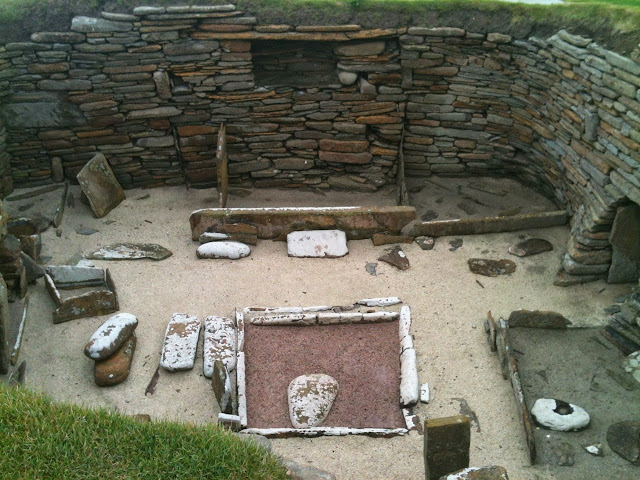 |
| The well preserved Neolithic Village of Skara Brae |
Ring o' Brodgar
Another UNESCO world heritage sites exists in western mainland, the Ring o' Brodgar. This is another neolithic structure, thought to have been erected between 2500 and 2000 BC. The Ring o' Brodgar is a henge, a circular or oval shaped flat area surrounded by some earthen work, such as a ditch or ring of stones. The most famous henge is Stonehenge in England, but hedges exist all over the British Isles. The Ring o' Brodgar consist of 27 (thought to have once been 60) large stones 7 to just over 15 ft tall. The ring is 340 ft across making it difficult to capture the whole ring in a photo. Not all stones are standing at the Ring o' Brodgar, and a few have even been split in two due lightning (two since 1906). Mind that previously I said the Orkneys can be damp. On the day we visited the Ring o' Brodgar the ground was way past damp. My loafers were caked in mud by the time we made our way around the circle; there are no paved side walks at this historic site. I rinsed my shoes off as best I could, but they never recovered. I would recommend more substantial sneakers if you plan on visiting this or any of the other historic sites in the Orkneys.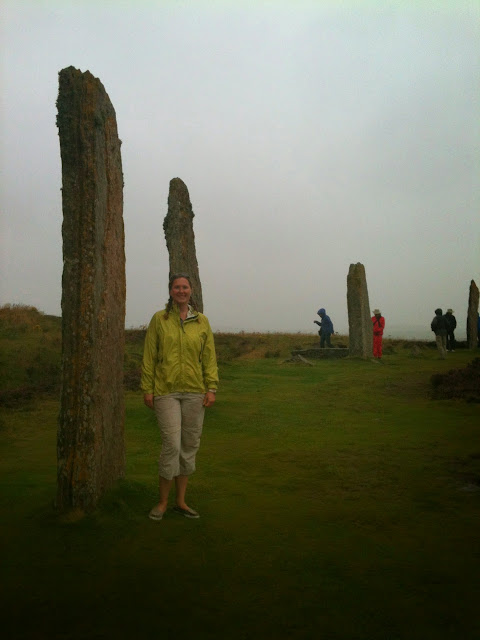 |
| A few of the stones that make up the Ring o' Brodgar. |
Standing Stones o' Stenness
Like hedges? Then you will love Mainland, as just a mile away from the Ring o' Brodgar are the Standing Stones o' Stenness. Three stones remain of this once stone circle. The monoliths at the Stones o' Stenness were erected earlier (3100 BC) than the Ring o' Brodgar and are much larger (up to 19 ft). It is unclear as to wether this stone circle was ever finished, but the stones that remain are an impressive site.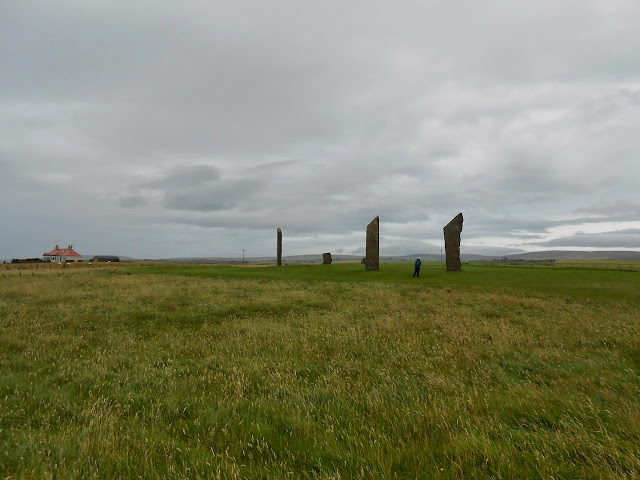 |
| The three remaining stones of the Standing Stones o' Stenness. Note the person for scale. |
Also located on Mailand near the other ancient structures is the Maeshowe, a hollowed out earthen mound dating from 2700 BC, which served as a tomb. The Maeshow from the outside simply looks like a large mound covered in grass, but the interior is actually separated into separate rooms, making it unique, as these types of structures go. One interesting aspect of the Maeshowe is the presence of viking graffiti most to the affect of "Olaf was here" or "Bard bedded Hilda" etched on the inside of the Maeshowe, which were inscribed in the 12th century. The Orkney Islands are home to many more Neolithic structures, ancient towns, and holy sites than I list here. The sites I listed above it is thought once formed together a massive ceremonial area, probably also encompassing the nearby Ring o' Bookan, another stone ring, and the comet stone, a lone monolith near the Ring o' Bookan.
Given the islands remoteness, you will not find such large crowds as at more accessible sites such as Stonehenge. It is easy to find bus tours that will take you to all of these ancient ruins. We went with the more affordable option <40 pounds. It was a double decker bus, with not roof on the top. So we saved some money over the more expensive options, but it did rain that day, and some of the more unprepared guests got wet and cold.
The locals I encountered were very friendly, even when I could not understand everything they said. So why not visits the Orkney Islands? Already visited the Orkney Islands? Post your experiences in the comment section below.
Given the islands remoteness, you will not find such large crowds as at more accessible sites such as Stonehenge. It is easy to find bus tours that will take you to all of these ancient ruins. We went with the more affordable option <40 pounds. It was a double decker bus, with not roof on the top. So we saved some money over the more expensive options, but it did rain that day, and some of the more unprepared guests got wet and cold.
The locals I encountered were very friendly, even when I could not understand everything they said. So why not visits the Orkney Islands? Already visited the Orkney Islands? Post your experiences in the comment section below.
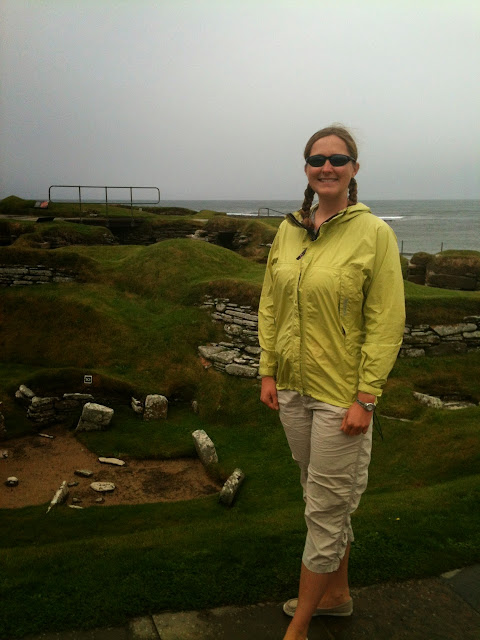
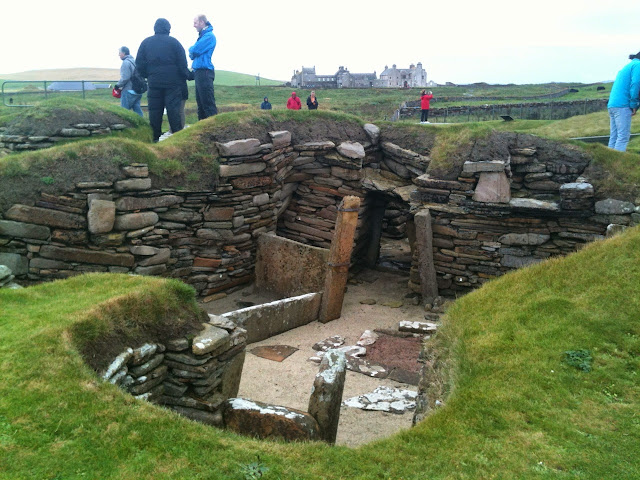
No comments:
Post a Comment